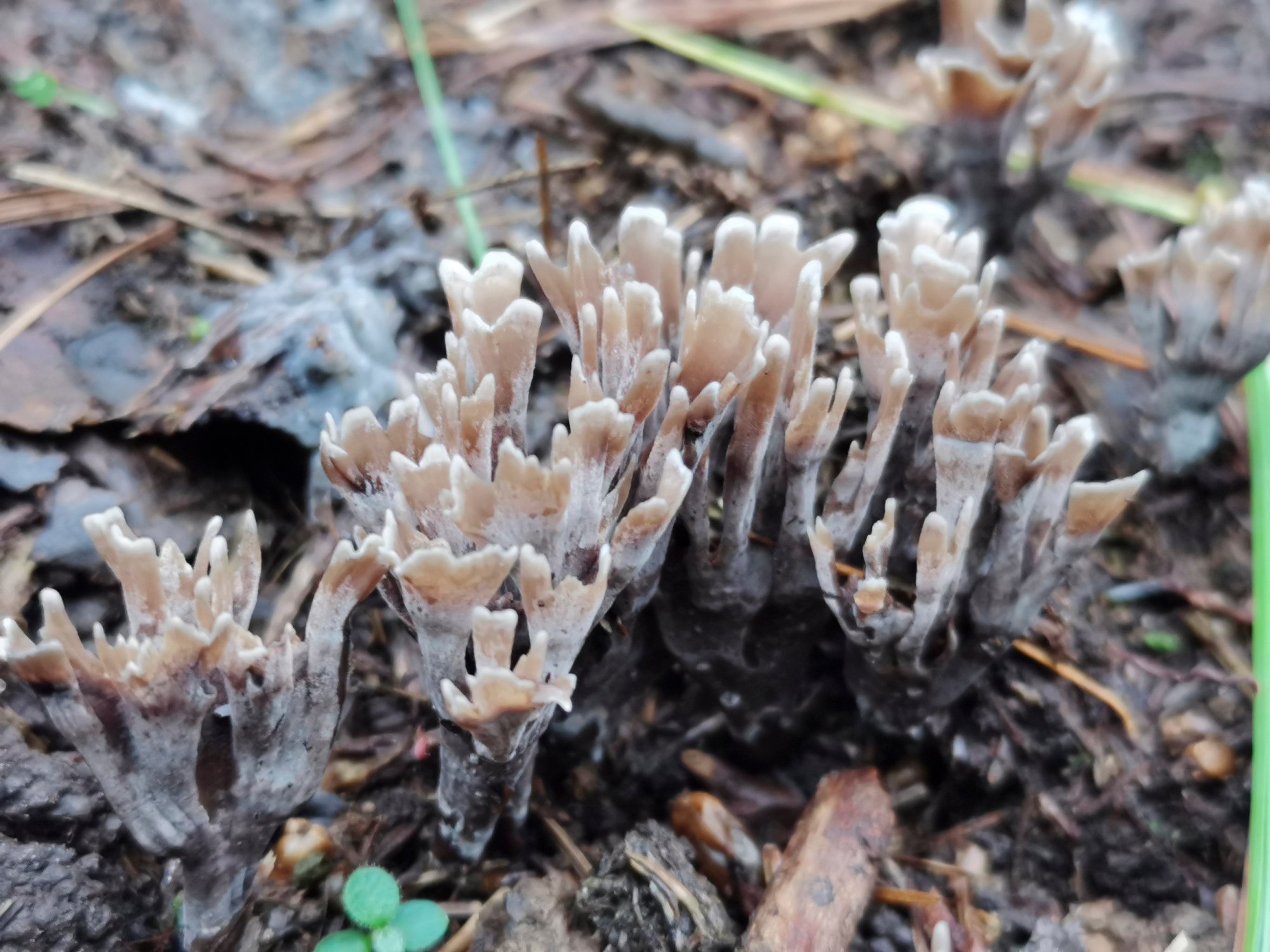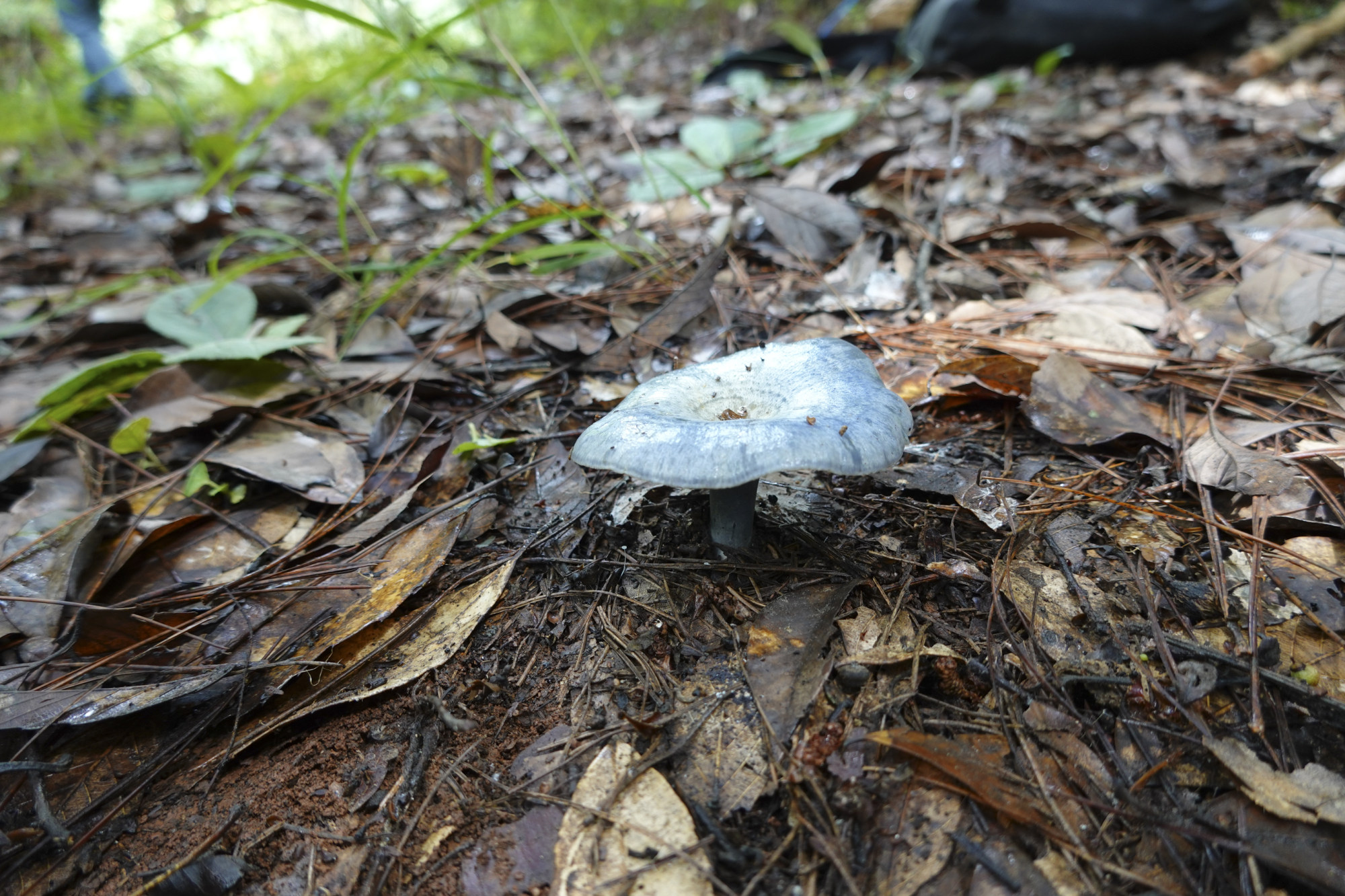
5 must-try mushrooms full of health benefits from China that you probably haven’t heard of
- From antioxidants to natural antidepressants, these mushrooms – ganba, horn of plenty, monkey head, beefsteak and indigo milk cap – are worth seeking out
- Ganba, found only in China’s Yunnan province, may halt cancer cell growth; horn of plenty is full of vitamin B12; and beefsteak helps neutralise free radicals
Eating mushrooms, even common shiitake and button mushrooms, is one of the best dietary choices you can make.
There are estimated to be more than 14,000 mushroom species worldwide, of which just over 2,000 are edible.
The global mushroom market was valued at US$50.3 billion in 2021 and is expected to grow by 9.7 per cent a year from 2022 to 2030 to US$115.8 billion.
Eating two mushrooms a day nearly halves cancer risk, study finds
This growth will be driven in part by the increasing vegan population seeking alternative protein-rich food sources.
China accounts for 75.1 per cent of the world’s mushroom and truffle production.
Here are five lesser-known but must-try mushrooms found in China.
1. Ganba

Aside from true connoisseurs, few know of this gourmet mushroom, and no wonder – scientists only discovered its existence in 1987.
Growing on roots of pine trees, the only place in the world where ganba is found is Yunnan province in southwest China.
Ganba does not harm trees. Instead, it develops an “ectomycorrhizal symbiosis”: having grown into the root, it sends minerals and water to the tree and gets nutrients in exchange.
This living arrangement also means that such mushrooms are impossible for people to cultivate.

Ganba is rare and costs about HK$1,000 (US$130) per kilogram on markets in China.
Great care must be taken when cooking it, recipes say, to make sure that the delicate taste is not lost.
You don’t need to go to Yunnan to try it – dried ganba can be ordered from mainland China, and high-end restaurants in Hong Kong also serve it.
A 2016 study by Hong Kong and mainland Chinese scientists published in the International Journal of Molecular Sciences showed that ganba’s natural arsenal of antioxidants may help prevent the growth of lung, breast, colon and liver cancer cells.
2. Horn of plenty / black chanterelle

It may also be known as the “trumpet of the dead” but, like ganba, horn of plenty is a friendly mushroom that works together with the tree on which it grows.
Like ganba, horn of plenty cannot be cultivated, but it has been eaten for centuries in different parts of the world.
“[Horn of plenty] is found in forests, growing in big clumps in moist places,” says professor Peter Mortimer, of the Kunming Institute of Botany at the Chinese Academy of Sciences. “It is rich in different vitamins and amino acids, vitamin B12, for example. Very high in protein, it is also a nice protein substitute for vegetarians.”
The unique health benefits of mushrooms: reasons to eat more
Mortimer is a mycologist – someone who studies fungi – who has spent more than a decade researching fungi in China.
A Portuguese study found that 100g of dried horn of plenty mushrooms contains 69.45g of protein, 13.44g of carbohydrates and 4.88g of fat, amounting to 378 calories. It also contains 87mg of vitamin C.
Dried horn of plenty mushrooms can be bought online and shipped to Hong Kong.
3. Monkey head / lion’s mane

If you feel like your life has lost all joy, you may be in urgent need of a serving of monkey head mushrooms.
In the not-too-distant future, you may even be prescribed an antidepressant medicine made from it. Hong Kong scientists are now studying the natural antidepressants that this mushroom contains.
A destroyer and a creator in one, monkey head breaks down dead wood in nature, but in a laboratory, it regenerates nerves.
Monkey head mushroom is widely available in Hong Kong’s shops and restaurants.
4. Beefsteak / ox tongue

“It does not look like something you may necessarily want to eat [and] it has a slimy texture,” Mortimer says of beefsteak mushrooms. “But it is a wonderful mushroom, and it does taste like beef. You can cut it into strips and fry with butter.”
The mushroom’s own diet consists of living and dead oak and chestnut trees. It is found, and used in cooking, from Central America to France, Germany, Nepal and China. It can be added raw to salads or used for making sashimi.
If you come across one growing in a forest, you may want to think twice before adding it to your salad.
Mushroom magic: why fungi are the latest superfood
According to an old German folktale, the red and slimy beefsteak mushrooms are the tongues of knights who had a curse put on them. A foodie who cuts a beefsteak mushroom from a tree will have to answer to an irate knight demanding his tongue back.
Scientists have shown that beefsteak mushroom is an effective “free-radical scavenger”. The antioxidants that it contains hunt down and neutralise free radicals – chemicals that damage your DNA and the machinery of your cells.
5. Indigo milk cap

The colour blue in food often signals unhealthy artificial colour additives. But rest assured that the indigo milk cap mushrooms are 100 per cent organic.
They all come from the wild, and the blue in them comes from a derivative of azuline, a natural compound.
“It is a striking-looking, unusual mushroom that cannot be cultivated. Blue-ish milk comes out of it if you break it,” Mortimer says.
How mushrooms might help fend off Alzheimer’s and other ailments
Indigo milk cap grows around the world and is sold in rural markets from Mexico to China, but little research has been done on its health and nutritional benefits.
We do know that it is unusually rich in dietary fibre, Mortimer says, but it is probably worth trying just for its colour.
Scavenger warning
Do not eat every blue mushroom, or any mushroom, you find. Leave the picking of any wild mushroom – however many vitamins and antioxidants it may be tempting you with – to experts.
Every year, people around the world die from making wrong mushroom choices.

